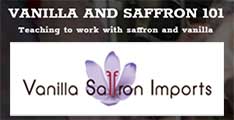Nikki Gorrell. To be sure, a visit to the Basque Country is incomplete without tasting the delectable varieties of pintxoak found in every tavern from idyllic mountain villages such as Zubieta, picturesque seaside towns such as Lekeitio, or thriving cities such as Bilbao, Gasteiz (Vitoria), Iruña (Pamplona), and the undisputed pintxo capital of Donostia (San Sebastian). What then exactly are pintxoak? To the Basque bar patron, they are small bites you hold in one hand while you hold a beverage of choice, usually wine, in the other. While there are common culinary combinations the most amazing aspect of the pintxo is that it can and does take any form. In this we have tasty miniature works of edible art coupled with the social institution of pintxo bar culture including the txikiteo.
What’s in a name? A lot if you are Basque which is why visitors will want to use the term “pintxo” when referring to this specialty. In the Basque language Euskara, small bites are called pintxo (singular) and pintxoak (plural; they are also called pintxos in English and ‘tx’ is pronounced like ‘ch’). For many generations in the Basque Country there has been a gastronomic tradition that intertwines social ritual with a culinary art form revolving around the pintxo, a small combination of ingredients that is most commonly placed on top of thin baguette slices or skewered with a wooden toothpick. The idea is to produce small bites that can be held easily and eaten while standing at the bar counter. In addition to prevalent seafood, such as bakalao (salt cod), tuna, and shrimp, pintxo gastronomy also includes cured pork, kroketak (small sphered or oblong fritters), eggs, goat and sheep’s cheese, olives, nuts, irasagarra (fruit pastes), various beans, vegetables (garlic, leeks, peppers, and potatoes are central), and of course bread, olive oil and a little paprika and sea salt. It is these traditional foods that are crafted into the miniature sculptural delicacies known as pintxoak.
The artful finger-foods have long been a daily custom on the “Spanish side” of the Basque Country. The reason is twofold. First, Basques tend to eat dinner quite late (usually between nine and ten), and pintxoak provide a relatively inexpensive and satisfying shot of diminutive yet calorie-rich foods that sustain them after the working day. Second, pintxoak are also an integral part of a vibrant communal life. Even rural Basques will gather in the late afternoon at the closest village tavern (taberna) to mingle and converse over a bar counter full of enticing and varied pintxoak. Basques frequently spend several hours a day in the company of friends and colleagues in public spaces like plazas, sidewalks, and parks—an adaptive response to living in tiny apartments. More often than not this congregating and communicating takes place within arm’s reach of a counter heavy with pintxo platters. Each taberna features several terraced platters with artfully arranged pintxos. There are the “usual suspects” that every bar will offer, such as patata tortilla (the Basque version of the frittata with eggs, potatoes, and onions cut into wedges) and the gilda, a skewer of marinated anchovy fillets, green olive, and guindilla pepper (called piperminak in Euskara).
There are no pintxos without drinks, most commonly ardoa (red wine), txakoli (sparkling white wine), sagardoa (hard cider) or non-alcoholic muztio (white grape juice with fresh citrus). Pintxo time is a family affair with children included. It is common to see three or four generations gathered together with thirty-somethings and grandparents sharing pintxos, drinks, and conversation while children play games and scamper between tables. It is all like a loud and boisterous public living room, and it’s a great multi-sensory experience.
Urban Basques often take advantage of taverns located door to door in the historic districts where streets are clogged with pedestrians. In the Parte Vieja (old section) of Donostia (San Sebastian) every street is lined with dozens of bars and the fierce competition means that the pintxoak found here are arguably the tastiest, tallest, and most stunning in their artistry. Most of these conjured in kitchens no bigger than a double bed.
Pintxos are typically made throughout the afternoon and placed on the bar top ready for customers to serve themselves. Patrons may pay up front per pintxo or keep the toothpicks that hold the pintxo together and pay per toothpick before leaving; it is often an honor system, especially during the many festivals in the Basque Country when pintxo bars are literally packed with patrons spilling out into the streets. Locals will tell you that the best pintxo bars have dirty floors laden with discarded napkins; the more dirty napkins,the tastier the pintxos! It can be tempting to linger but if you really want to enjoy pintxoak as the locals do, you restrain yourself to one pintxo per bar before moving on to the next.
Txikiteo— derived fromtxiki, meaning “small”— is the practice of consuming a small glass of wine and a corresponding pintxo at several consecutive bars while on foot. Especially common among groups of friends in urban areas, the txikiteo keeps everyone lively and active; over the course of several hours many bars will be frequented and many blocks will be walked, often into the wee hours.
Basque food is deceptively simple; with relatively few ingredients and a minimal spice kit, the emphasis is on fresh, canned, and cured, all locally sourced. The world’s highest quality canned seafood and famous canned zainzuriak (white asparagus) and pikillo piperra (piquillo peppers) are essentials in any Basque pantry and are pintxoak staples. Basques were innovators of the “locavore culinary scene” long before it became fashionable in the US. The pride in using superior foodstuffs as well as artistic presentation is evident in the pintxo tradition and the broader food system. Sustainable agriculture, animal husbandry, native foods, cooking, and eating is taken very seriously in the Basque Country.
The dedication to gastronomic perfection and pintxoak as culinary art has exploded in the 21st century. As Basque cookbook author Teresa Barrenechea confirms, “Innovative chefs working in the Basque Country [are] taking pintxos to new heights with exotic combinations and spectacular presentations.” Nowhere is this more apparent than in the epicenter of pintxo culture in Donostia (San Sebastian). Here the Basque Culinary Center serves as the premier educational institution offering both undergraduate and graduate degrees in Basque cuisine. The open-to-the-public kafetegia (cafeteria) provides insight into the“pintxoak as art form” as a sleek, minimalist atmosphere with exhibition lighting frames edible masterpieces in the form of pintxoak. Creative, modern presentations evoke a unique sensory experience whereby food literally tastes as fantastic as it looks. The Basque chefs in training demonstrate via vertical, multi-layered sculptures to all who enter this space that Basque culinary arts are truly just that. For me the greatest surprise in visiting the Basque Country in 2015, five years after my previous visit, was seeing the extraordinary loftiness of many of the artistic pintxos, four or five inches in stature, skewered and as sleek as they were tasty.
The pintxo plays an immense role in Basque culinary and social culture. The pintxoak and the taverns that offer them provide richly satisfying small bites while also serving as essential communal gathering spaces. The pintxo itself functions as the perfect food medium for ever-evolving culinary expression—it is an amalgam of community and innovation that exemplifies Basque culture in a small yet profoundly grand way.
Nikki Gorrell is assistant professor of anthropology at the College of Western Idaho. For five years she worked at the Basque Museum and Cultural Center in Boise which inspired her to conduct ethnographic research in the Basque Country (2007–2016). Her focus areas include cultural and linguistic revitalization movements and the maintenance of culinary traditions.



 Lagun bati bidali
Lagun bati bidali Komentarioa gehitu
Komentarioa gehitu








